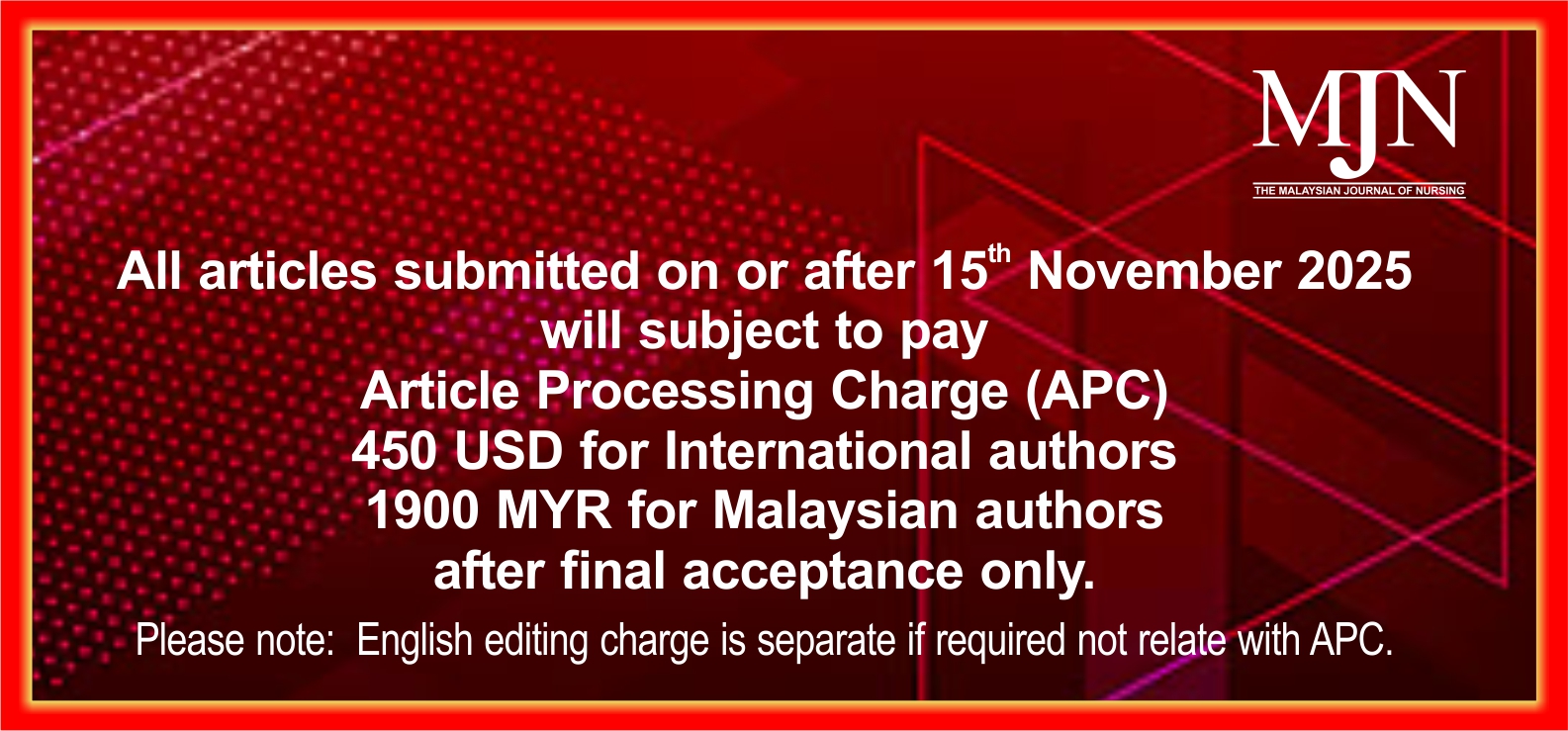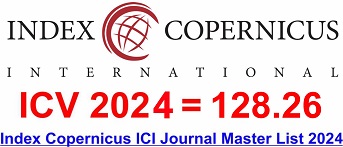Risk Factors of Stunting among Children in Rural Area of Jember, Indonesia
DOI:
https://doi.org/10.31674/mjn.2025.v16i04.016Abstract
Background: The stunting prevalence in Jember has seen a mark escalation, reaching 34.9% by the year 2023. The impact of stunting can be significant as it may reduce the quality of human resources. It is important to know the risk factors of stunting in order to modify these factors through prevention efforts. Methods: This research employed a cross-sectional design involving 163 mothers of children aged 12-59 months residing in Sukowono Village, Jember, Indonesia, who were selected using consecutive sampling. Independent variables included sociodemographic characteristics of families and children, collected using a demographic questionnaire. The dependent variable is stunting, determined by plotting the children’s height on the WHO (World Health Organization) Z-score height-for-age growth curve in the mother and Child Health book. Data were analysed using Multiple Logistic Regression. Results: As many as 49 (30.1%) children were found to be stunted. Factors significantly associated with stunting were maternal height (p<0.001; OR = 8.495), father's education (p=0.012; OR=4.097), and family income (p<0.001; OR=6.144). Conclusion: Nurses have a crucial role in preventing stunting in rural areas by educating the community, ensuring that parents prioritise proper nutrition for women at every stage of life, from birth and adolescence to marriage, pregnancy, and breastfeeding. Providing adequate nutrition for women throughout their lives, especially during their productive years, should be a priority since maternal height is inherited by offspring. To reduce stunting in rural areas, the government should continue to promote 12-years compulsory education and establish various strategies to assist underprivileged families in rural areas in meeting their children’s nutritional needs.
Keywords:
Risk Factors, Rural Area, StuntingDownloads
References
Addo, I. Y., Boadu, E. F., Osei Bonsu, E., Boadi, C., & Dadzie, F. A. (2023). Prevalence and factors associated with undernutrition among children under the age of five years in Benin. PloS One, 18(8). https://doi.org/10.1371/journal.pone.0289933
Afiah, N., Asrianti, T., Muliyana, D., Kesehatan Masyarakat, F., Mulawarman, U., Sambaliung Kampus Gunung Kelua Unmul Samarinda, J., & Timur Korespondensi, K. (2020). Low consumption of animal protein as a risk factor for stunting in toodlers in samarinda city. Nutrire Diaita, 12(1), 23–28. https://doi.org/10.1371/journal.pone.0289933
Ahmed, H., & Khalid, H. (2023). Income-nutrition gradient and intrahousehold allocation in rural pakistan. Maternal and Child Health Journal, 27(7), 1208–1218. https://doi.org/10.1007/s10995-023-03633-4
Amaha, N. D., & Woldeamanuel, B. T. (2021). Maternal factors associated with moderate and severe stunting in Ethiopian children: Analysis of some environmental factors based on 2016 demographic health survey. Nutrition Journal, 20(1), 1–9. https://doi.org/10.1186/s12937-021-00677-6
Anik, A. I., Chowdhury, M. R. K., Khan, H. T. A., Mondal, M. N. I., Perera, N. K. P., & Kader, M. (2021). Urban-rural differences in the associated factors of severe under-5 child undernutrition based on the composite index of severe anthropometric failure (CISAF) in Bangladesh. BMC Public Health, 21(1), 1–15. https://doi.org/10.1186/s12889-021-12038-3
Aria, Y. P., Zahra, S., Adhelaa, M., & Nurdiatami. (2022). Tinjauan Literatur: Perkembangan Program Penanggulangan Stunting di Indonesia [Pendahuluan literature review: Development of stunting prevention programs in Indonesia]. Jurnal Epidemiologi Kesehatan Indonesia, 6(2), 53–58. https://doi.org/10.7454/epidkes.v6i2.6049
Ashar, H., Laksono, A. D., Supadmi, S., Kusumawardani, H. D., Yunitawati, D., Purwoko, S., & Khairunnisa, M. (2024). Factors related to stunting in children under 2 years old in the Papua, Indonesia Does the type of residence matter? Saudi Medical Journal, 45(3), 273–278. https://doi.org/10.15537/smj.2024.45.3.20230774
Botorie, F., Abera, B. B., Botorie, A., Abera, A., Dubiwak, A. D., Charkos, T. G., & Dassie, G. A. (2025). A community-based study to assess the prevalence and predictors of stunting among under-five children in Sheger. Frontiers in Nutrition, 12, 1–9. https://doi.org/10.3389/fnut.2025.1479732
Chowdhury, T., Chakrabarty, S., Rakib, M., Winn, S., & Bennie, J. (2021). Effects of parental education and wealth on early childhood stunting in Bangladesh. Research Square, 1–22. https://doi.org/10.21203/rs.3.rs-1048134/v1
Cohen, J. (1988). Statistical analysis and power for the behavioral sciences. (2nd ed.). Erinbaum, Hillsdale, NJ, USA. https://doi.org/10.1186/s43054-020-00043-x
Ekholuenetale, M., Barrow, A., Ekholuenetale, C. E., & others. (2020). Impact of stunting on early childhood cognitive development in Benin: Evidence from Demographic and Health Survey. Egyptian Pediatric Association Gazette, 68(31). https://doi.org/10.1186/s43054-020-00043
Endrinikapoulos, A., Afifah, D. N., Mexitalia, M., Andoyo, R., Hatimah, I., & Nuryanto, N. (2023). Study of the importance of protein needs for catch-up growth in Indonesian stunted children: A narrative review. SAGE Open Medicine, 11, 1–9. https://doi.org/10.1177/20503121231165562
FAO, IFAD, UNICEF, WFP, & WHO. (2020). The state of food security and nutrition in the world 2020: Transforming food systems for affordable healthy diets. Food and Agriculture Organization of the United Nations. https://doi.org/10.4060/ca9692en
Food and Agriculture organization of United Nations (FAO). (2020). The state of food security and nutrition in the world 2020: Transforming food system for affordable healthy diets. https://doi.org/10.4060/ca9692en
Fitri, R., Khomsan, A., Dwiriani, C. M., & Masyarakat, D. G. (2024). The dominant factors associated with stunting among two years children in five provinces in Indonesia. AcTion: Aceh Nutrition Journal Original Article, 9(1), 100–109. http://dx.doi.org/10.30867/action.v9i1.1527
Gonete, A. T., Kassahun, B., Mekonnen, E. G., & Takele, W. W. (2021). Stunting at birth and associated factors among newborns delivered at the University of Gondar Comprehensive Specialized Referral Hospital. PLoS One, 16(1 January), 1–16. https://doi.org/10.1371/journal.pone.0245528
Gupta, A., Cleland, J., & Sekher, T. V. (2021). Effects of parental stature on child stunting in India. Journal of Biosocial Science. 54(4), 605-616 https://doi.org/10.1017/S0021932021000304
Haq, S. ul, Boz, I., Shahbaz, P., & Murtaza, M. R. (2020). Rural families food intake behaviour in relation to livelihood diversification, income differences and family size. International Journal of Consumer Studies, 44(5), 481–498. https://doi.org/10.1111/ijcs.12580
Indra, J., & Khoirunurrofik, K. (2022). Understanding the role of village fund and administrative capacity in stunting reduction: Empirical evidence from Indonesia. PloS One, 17(1). https://doi.org/10.1371/journal.pone.0262743
Islam, M., Ali, S., Majeed, H., Ali, R., Ahmed, I., Soofi, S., & Bhutta, Z. A. (2025). Drivers of stunting and wasting across serial cross-sectional household surveys of children under 2 years of age in Pakistan: potential contribution of ecological factors. American Journal of Clinical Nutrition, 121, 610–619. https://doi.org/10.1016/j.ajcnut.2025.01.003
Jelenkovic, A., Sund, R., Yokoyama, Y., Latvala, A., Sugawara, M., Tanaka, M., Matsumoto, S., Freitas, D. L., Maia, J. A., Knafo-Noam, A., Mankuta, D., Abramson, L., Ji, F., Ning, F., Pang, Z., Rebato, E., Saudino, K. J., Cutler, T. L., Hopper, J. L., … Silventoinen, K. (2020). Genetic and environmental influences on human height from infancy through adulthood at different levels of parental education. Scientific Reports, 10(1), 1–11. https://doi.org/10.1038/s41598-020-64883-8
Kang, H. (2021). Sample size determination and power analysis using the G*Power software. Journal of Educational Evaluation for Health Professions, 18, 1–12. https://doi.org/10.3352/JEEHP.2021.18.17
Karnowahadi. (2017). Odds ratio: A result of business research analysis. Admisi & Bisnis, 18(1), 47–54. https://doi.org/10.32497/ab.v18i1.1061
Kassie, G. A., & Asgedom, Y. S. (2025). Childhood stunting severity level and associated factors among under-five children in Tanzania: A multi-level ordinal logistic regression analysis using 2022 Tanzanian demographic and health survey. BMC Pediatrics, 25(1), 1–10. https://doi.org/10.1186/s12887-025-05490-2
Khaliq, A., Nambiar, S., Miller, Y. D., & Wraith, D. (2024). Assessing the relationship of maternal short stature with coexisting forms of malnutrition among neonates, infants, and young children of Pakistan. Food Science and Nutrition, 12(4), 2634–2649. https://doi.org/10.1002/fsn3.3945
Kiik, S. M., & Nuwa, M. S. (2021). Maternal factors in stunting among vulnerable children. Jurnal Keperawatan Indonesia, 24(2), 82–89. https://doi.org/10.7454/jki.v24i2.1306
Kustanto, A., Rachmat, O., & Setyadi, S. (2025). The prevalence of stunting in Indonesia: An examination of the health, socioeconomic status, and environmental determinants. Journal of Iranian Medical Council, 8(1), 67–79. https://doi.org/10.18502/jimc.v8i1.17062
Laksono, A. D., Wulandari, R. D., Amaliah, N., & Wisnuwardani, R. W. (2022). Stunting among children under two years in Indonesia: Does maternal education matter? PLoS One, 17, 1–11. https://doi.org/10.1371/journal.pone.0271509
Marshall, N. E., Abrams, B., Barbour, L. A., Catalano, P., Christian, P., Friedman, J. E., Hay, W. W., Hernandez, T. L., Krebs, N. F., Oken, E., Purnell, J. Q., Roberts, J. M., Soltani, H., Wallace, J., & Thornburg, K. L. (2022). The importance of nutrition in pregnancy and lactation: Lifelong consequences. American Journal of Obstetrics and Gynecology, 226(5), 607–632. https://doi.org/10.1016/j.ajog.2021.12.035
Ministry of Health. (2022). Buku Saku Hasil Studi Status Gizi Indonesia (SSGI) 2022 [Pocket Book of Results of the Indonesian Nutritional Status Study (SSGI) 2022]. Retrieved from: https://kesmas.kemkes.go.id/assets/uploads/contents/attachments/09fb5b8ccfdf088080f2521ff0b4374f.pdf. Accessed on 16th February 2024.
Ministry of Health. (2023a). Hasil Survey Status Gizi Indonesia (SSGI) 2022 [Results of the 2022 Indonesian Nutritional Status Survey (SSGI)]. Kementerian Kesehatan Republik Indonesia. Retrieved from: https://ayosehat.kemkes.go.id/pub/files/files46531._MATERI_KABKPK_SOS_SSGI.pdf. Accessed on 17th November 2023.
Ministry of Health. (2023b). Buku Kesehatan Ibu dan Anak [Maternal and Child Health Book]. Kemenkes Ri. Retrieved from: https://gizikia.kemkes.go.id/assets/file/pedoman/BUKU KIA REVISI 2021 LENGKAP.pdf. Accessed on 16th November 2023.
Ndagijimana, S., Kabano, I., Masabo, E., & Ntaganda, J. M. (2025). Predicting stunting status among under-5 children in Rwanda using neural network model: Evidence from 2020 Rwanda demographic and health survey. F1000Research, 13, 1–23. https://doi.org/10.12688/f1000research.141458.2
Nemerimana, M., & Gbadamosi, M. A. (2025). Trends in the prevalence of concurrent anaemia and stunting among infants and young children in Rwanda: A cross-sectional study from 2010 to 2020. Global Health Action, 18(1). https://doi.org/10.1080/16549716.2025.2466281
Nugraheni, W. P., Mahmudiono, T., Faisal, D. R., Purwatiningsih, Y., Lestyoningrum, S. D., Yulianti, A., Nainggolan, O., & Abihail, C. T. (2023). Poor and uneducated parents increased the risk of stunting among children living in non-remote areas of Indonesia. Research Square, 1–12. https://doi.org/10.21203/rs.3.rs-2537611/v1
Ostir, Gleen, V., & Uchida, T. (2000). Logistic regression a non-technical review. American Journal of Physical Medicine & Rehabilitation, 79(6), 565–572. Retrived from: https://journals.lww.com/ajpmr/abstract/2000/11000/logistic_regression__a_nontechnical_review.17.aspx. Accessed on 18th January 2024.
Public Health Office of Jember. (2023). Stunting Jember optimis turun [Jember is optimistic that stunting will decrease]. Retrieved from: https://ppid.jemberkab.go.id/berita-ppid/detail/stunting-jember-optimis-turun. Accessed on 16th November 2023.
Qurani, R. M., Karuniawaty, T. P., John, R. E., Wangiyana, N. K. A. S., Setiadi, Q. H., Tengkawan, J., Septisari, A. A., & Ihyauddin, Z. (2022). Correlation between maternal factor and stunting among children of 6-12 months old in Central Lombok. Journal of Public Health Research and Community Health Development, 5(2), 107. https://doi.org/10.20473/jphrecode.v5i2.23525
Saleh, A., Syahrul, S., Hadju, V., Andriani, I., & Restika, I. (2021). Role of maternal in preventing stunting: A systematic review. Gaceta Sanitaria, 35, S576–S582. https://doi.org/10.1016/j.gaceta.2021.10.087
Shinsugi, C., & Mizumoto, A. (2022). Associations of nutritional status with full immunization coverage and safe hygiene practices among thai children aged 12–59 months. Nutrients, 14(1). https://doi.org/10.3390/nu14010034
Singh, S., Jones, A. D., DeFries, R. S., & Jain, M. (2020). The association between crop and income diversity and farmer intra-household dietary diversity in India. Food Security, 12(2), 369–390. https://doi.org/10.1007/s12571-020-01012-3
Soliman, A., De Sanctis, V., Alaaraj, N., Ahmed, S., Alyafei, F., Hamed, N., & Soliman, N. (2021). Early and long-term consequences of nutritional stunting: From childhood to adulthood. Acta Biomedica, 92(1), 1–12. https://doi.org/10.23750/abm.v92i1.11346
Sserwanja, Q., Kamara, K., Mutisya, L. M., Musaba, M. W., & Ziaei, S. (2021). Rural and urban correlates of stunting among under-five children in Sierra Leone: A 2019 nationwide cross-sectional survey. Nutrition and Metabolic Insights, 14. https://doi.org/10.1177/11786388211047056
Sufri, S., Nurhasanah, Jannah, M., Dewi, T. P., Sirasa, F., & Bakri, S. (2023). Child stunting reduction in Aceh Province: Challenges and a way ahead. Maternal and Child Health Journal, 27(5), 888–901. https://doi.org/10.1007/s10995-023-03601-y
Susyani, S., Febry, F., Margarhety, I., Sadiq, A., Sartono, S., Sari, I. P., & Ni’mah, T. (2022). Maternal risk factor on incidence of stunting in South Sumatera. Open Access Macedonian Journal of Medical Sciences, 10(E), 1599–1604. https://doi.org/10.3889/oamjms.2022.10761
The World Bank. (2016). Annual Report 2016. Retrieved from: https://thedocs.worldbank.org/en/doc/5963915405684990430340022018/original/worldbankannualreport2016.pdf. Accessed on 16th December 2023.
United Nations Children's Fund (UNICEF) (2020). Level and trends in child malnutrition: Key finding of the 2020 edition of the joint child manlnutrition estimates. In WHO. Retrieved from: https://data.unicef.org/resources/jme-report-2020/. Accessed on 19th January 2024.
Umar, H. B. (2009). Principal Component Analysis (PCA) dan aplikasinya dengan SPSS. Jurnal Kesehatan Masyarakat Andalas, 3(2), 97-101. https://doi.org/10.24893/jkma.v3i2.68
Wells, J. C. K. (2017). The New “Obstetrical Dilemma”: Stunting, obesity and the risk of obstructed labour. Anatomical Record, 300(4), 716–731. https://doi.org/10.1002/ar.23540
World Health Organisation (WHO) (2015). Stunting in a nutshell. Retrieved from: https://www.who.int/news/item/19-11-2015-stunting-in-a-nutshell. Accessed on 16th December 2023.
World Health Organisation (WHO) (2017). Guideline assessing and managing: children at primary health-care facilities to prevent overweight and obesity in the context of the double burden of malnutrition. Updates for the Integrated Management of Childhood Illness (IMCI). Retrieved from: https://www.who.int/publications/i/item/9789241550123. Accessed on 16th December 2023.
Wiliyanarti, P. F., Choliq, I., Hasanah, U., & Lin, S. Y. (2025). Mother’s experiences in caring for children with stunting in rural Indonesia. Journal of Transcultural Nursing, 36(2), 161–167. https://doi.org/10.1177/10436596241274264
Zhihui, L., Rockli, K., Sebastian, V., & Subramanian, S. V. (2020). Factors associated with child stunting, wasting, and underweight in 35 low- and middle-income countries. JAMA Network Open, 3(4). https://doi.org/10.1001%2Fjamanetworkopen.2020.3386
Published
How to Cite
Issue
Section
License
Copyright (c) 2025 The Malaysian Journal of Nursing (MJN)

This work is licensed under a Creative Commons Attribution-NonCommercial-NoDerivatives 4.0 International License.



































